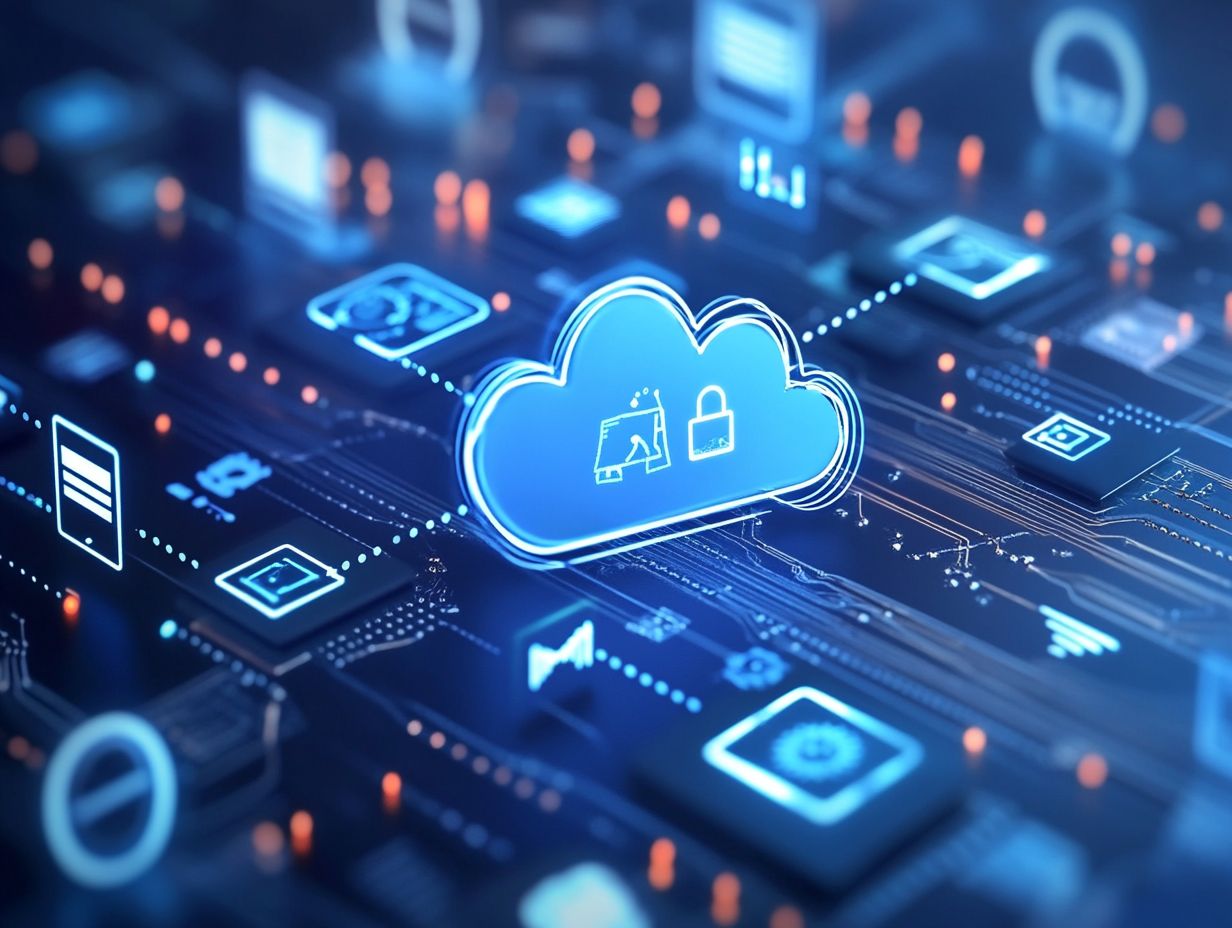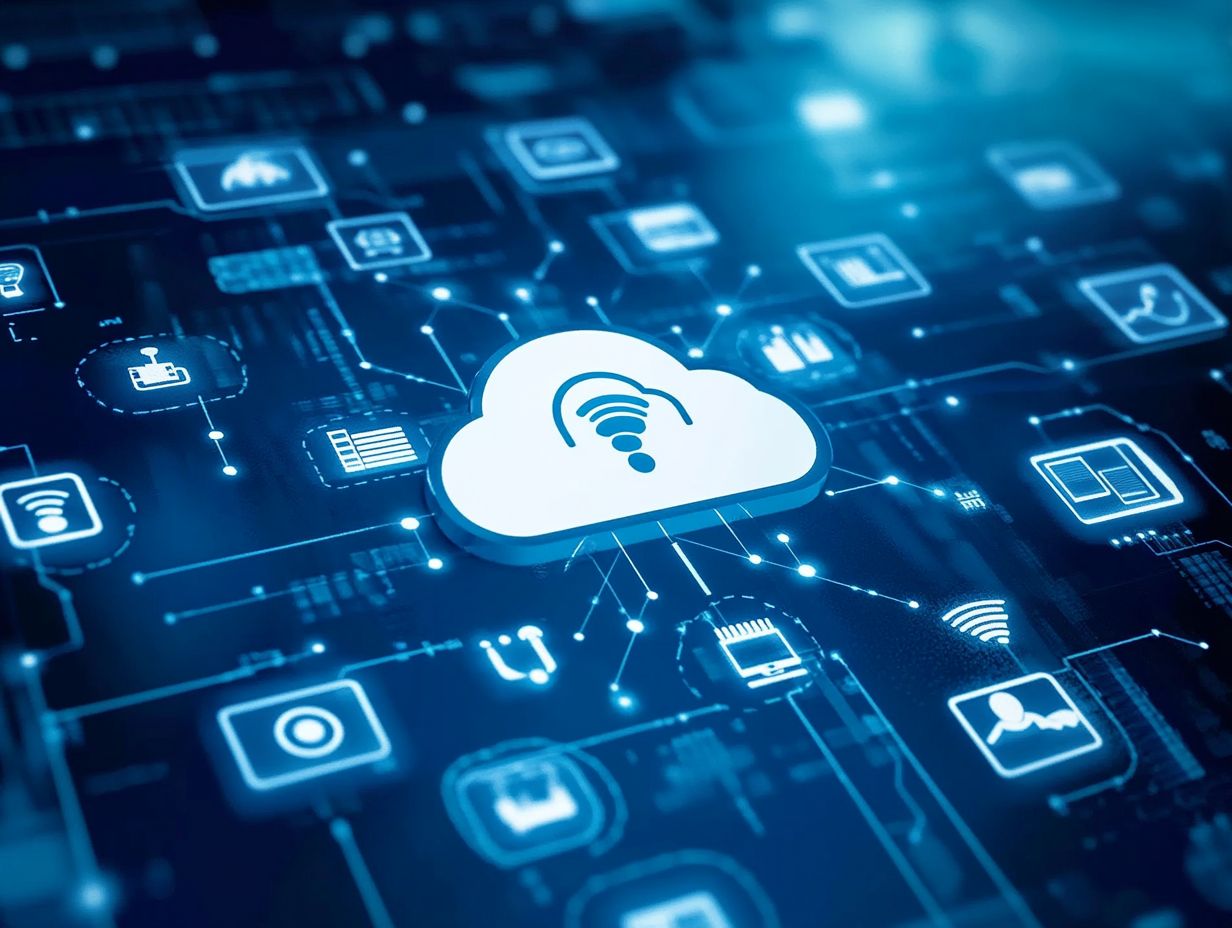Understanding Usage-Based Pricing in Cloud
In the ever-evolving realm of cloud computing, pricing models have a big impact on your business’s costs and efficiency. Is this pricing strategy the right fit for your business?
Usage-based pricing has emerged as a favored approach, allowing you to adopt a pay-for-what-you-use strategy that can translate into significant cost savings and great flexibility.
However, you might also face unexpected costs and a sense of diminished control.
This article explores the pros and cons of usage-based pricing, the factors that influence it, and strategies to optimize costs, offering a thorough comparison with other pricing models.
Explore the insights within to determine if this pricing strategy is the perfect match for your organization.
Contents
Key Takeaways:

- Usage-based pricing in the cloud offers cost savings and flexibility for businesses, allowing them to only pay for the resources they use.
- There is a risk of unexpected costs and lack of control with usage-based pricing.
- It is important to carefully monitor resource usage and demand to optimize costs.
- When considering pricing models, weigh the pros and cons of each, as different models may suit different business needs.
What is Usage-Based Pricing?
Usage-based pricing, or consumption-based pricing, is a flexible billing model that lets you pay only for the resources you actually use. This approach shines particularly in Software as a Service (SaaS) and cloud computing environments, allowing businesses like yours to scale expenses according to real usage.
By embracing this pricing structure, you can significantly enhance customer satisfaction, as it aligns costs with your needs and actual consumption patterns.
Take AWS, for example; they charge you based on your consumption of services such as storage, computing power, and data transfer. This offers a cost-effective solution tailored to a variety of user requirements.
Google Cloud Platform also uses usage-based pricing for its data storage and machine learning applications, enabling organizations to optimize costs while ensuring you only pay for the services you actively employ.
This adaptability not only leads to a more efficient allocation of resources but also encourages innovation across sectors. You can experiment with new technologies without the burden of fixed costs, making this pricing strategy an appealing choice in the ever-evolving software landscape.
Benefits of Usage-Based Pricing in Cloud
Usage-based pricing in the cloud presents a wealth of advantages for you, including heightened customer satisfaction, improved product adoption rates, and increased net dollar retention.
This model allows you to align your costs with actual usage, ensuring that you only pay for what you consume. In doing so, it eliminates the billing complexities that frequently accompany traditional pricing strategies, providing a clearer and more straightforward financial experience.
Cost Savings and Flexibility

One of the primary advantages of usage-based pricing is the potential for significant cost savings. You only pay for the resources you actually use, which offers a level of flexibility that traditional fixed-rate pricing models simply can t match.
In practical terms, this translates into options like tiered pricing, enabling you to scale your services according to your needs without overcommitting financially.
Take Twilio, for example; their pricing structure allows you to pay for SMS messages based on volume. This means that if you re running a smaller business, you can start with minimal usage and gradually ramp up as your needs increase, all while keeping your costs manageable.
Similarly, Stripe s per-unit pricing strategy ensures that you only pay transaction fees based on the number of payments processed. This accommodates any fluctuations in your sales volume and enhances your budget predictability.
By leveraging these strategies, you not only save on unnecessary expenses but also gain the flexibility to adapt your spending as circumstances evolve.
Potential Drawbacks of Usage-Based Pricing
While usage-based pricing offers a range of advantages, it also comes with its own set of potential drawbacks.
You might encounter unexpected costs or feel a perceived lack of control over your expenses, which can lead to billing complexities for both you and the provider.
Evaluate your current pricing models and consider whether switching to usage-based pricing might benefit you.
Unexpected Costs and Lack of Control
Unexpected costs can pose a significant challenge when navigating usage-based pricing. As consumption metrics fluctuate, you may find your bills soaring beyond initial expectations. This can leave you feeling as though you’re losing control over your finances.
Consider a case study from a medium-sized SaaS company: one customer experienced a staggering 150% increase in their monthly bill due to sudden spikes in service usage during peak seasons. Such unpredictability can shake your trust and create frustration.
Acting now by adopting transparent billing practices can help you regain control over your finances. Companies can provide detailed usage reports and forecasts, enabling you to set realistic budgets and better anticipate your expenses.
Introducing capped billing can reduce anxiety about unexpected charges, creating a more reassuring experience.
Factors that Affect Usage-Based Pricing

Several factors influence usage-based pricing, including how resources are used, market demand, and how you set prices.
Each of these elements plays a vital role in shaping how customers interact with your service and their overall experience with the product.
Understanding Resource Usage and Demand
Understanding resource usage and demand is essential if you’re utilizing usage-based pricing. Accurately tracking consumption metrics allows you to forecast revenue and align your pricing strategies effectively with your customers’ needs.
By closely monitoring how your services are consumed, you can make informed decisions about your pricing models and resource allocation. Take a cue from cloud service providers like AWS and Google Cloud Platform, which offer tools such as AWS CloudWatch and Google Cloud’s Operations Suite.
These tools enable you to analyze your resource usage in real-time. With these insights at your fingertips, you can adopt hybrid pricing models that blend flat rates with variable costs, tailoring your approach to accommodate different usage patterns.
For instance, if your business experiences fluctuating demands, a model that charges a base rate supplemented by lower variable fees during off-peak usage could enhance your cost efficiency and provide better service customization.
How to Optimize Usage-Based Pricing
To optimize usage-based pricing, concentrate on effective cost management. Leverage customer feedback to refine your pricing strategy and enhance the overall user experience.
This approach will ultimately drive product-led growth and elevate your business.
Strategies for Cost Management

Effective cost management strategies within a usage-based pricing model can greatly enhance your approach. Consider setting usage limits, anticipating pricing changes, and implementing automated financial processes to ensure accurate billing and elevate customer satisfaction.
By strategically investing in these techniques, you can cultivate a more sustainable financial structure that boosts operational efficiency and strengthens customer loyalty.
For example, you might employ predictive analytics to forecast usage trends, enabling you to adjust pricing models proactively. This strategy has been successfully utilized by PayPal, which leverages real-time data to offer transparent pricing, ultimately benefiting both the business and its customers.
Similarly, platforms like Zapier provide tiered pricing based on usage, allowing clients to select the plan that best fits their needs. This not only enhances customer satisfaction but also optimizes revenue streams, ensuring a win-win scenario for everyone involved.
Comparing Usage-Based Pricing with Other Models
When comparing usage-based pricing with other models like commitment pricing, hybrid pricing, and transactional pricing, you’ll uncover a variety of pros and cons that warrant careful consideration.
It’s essential to choose a pricing strategy that aligns with your objectives and enhances your market success.
Pros and Cons of Different Pricing Models
Each pricing model has its own advantages and drawbacks. These factors can influence customer needs and market dynamics.
Take subscription-based models, for example. They create predictable revenue streams that can stabilize your cash flow.
However, they might turn away customers who prefer one-time payments.
Dynamic pricing offers flexibility to adjust based on demand and competition. But it can alienate price-sensitive consumers if they see pricing as unfair.
A study by McKinsey found that companies using variable pricing strategies increased profits by up to 25% in high-demand situations.
Value-based pricing can maximize profit margins. It achieves this by aligning prices with what consumers believe the service is worth.
To implement this successfully, investing time in market research is essential for success. You’ll need to gather customer insights to tackle the challenges involved.
Frequently Asked Questions
What is usage-based pricing in cloud computing?
Usage-based pricing means customers only pay for the resources they actually use in the cloud. For a deeper insight into how these costs work, check out understanding the pricing structures of cloud providers, as costs are directly linked to consumption, like storage and bandwidth.
How does usage-based pricing differ from traditional pricing models?
Traditional pricing often involves a fixed fee. In contrast, usage-based pricing allows businesses to save costs by paying only for what they use.
What are the advantages of using usage-based pricing?
This model can lead to cost savings since businesses pay only for what they need. It also allows for better scalability and flexibility.
Are there any disadvantages to usage-based pricing?
A potential downside is the unpredictability of costs. This can make budgeting difficult.
What factors are typically included in usage-based pricing?
Factors can include storage, bandwidth, compute power, API calls, and data transfer. Specifics can vary by provider.
How can businesses manage costs effectively?
To keep costs down, businesses should track resource usage closely. Setting alerts and budget limits can help avoid unexpected expenses.






